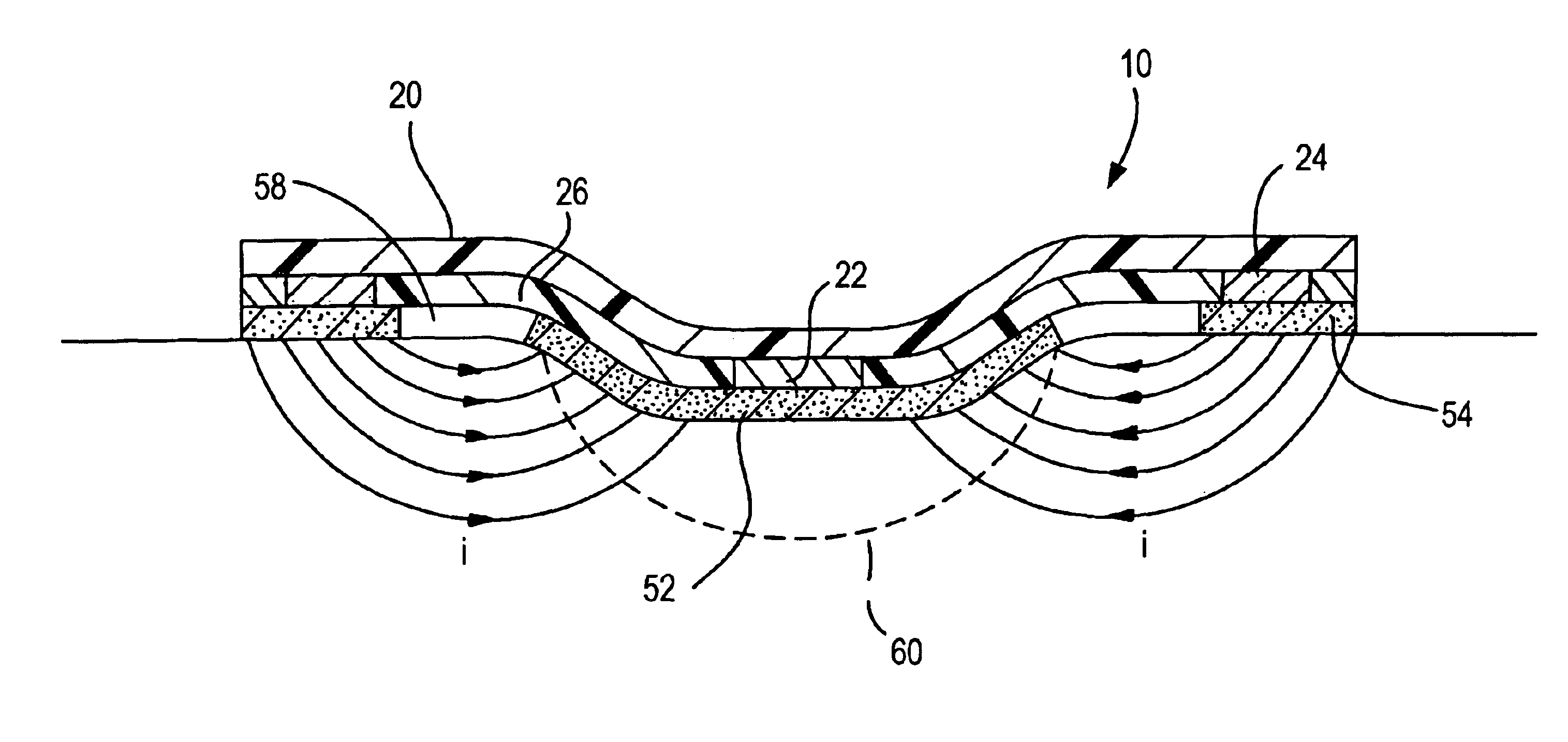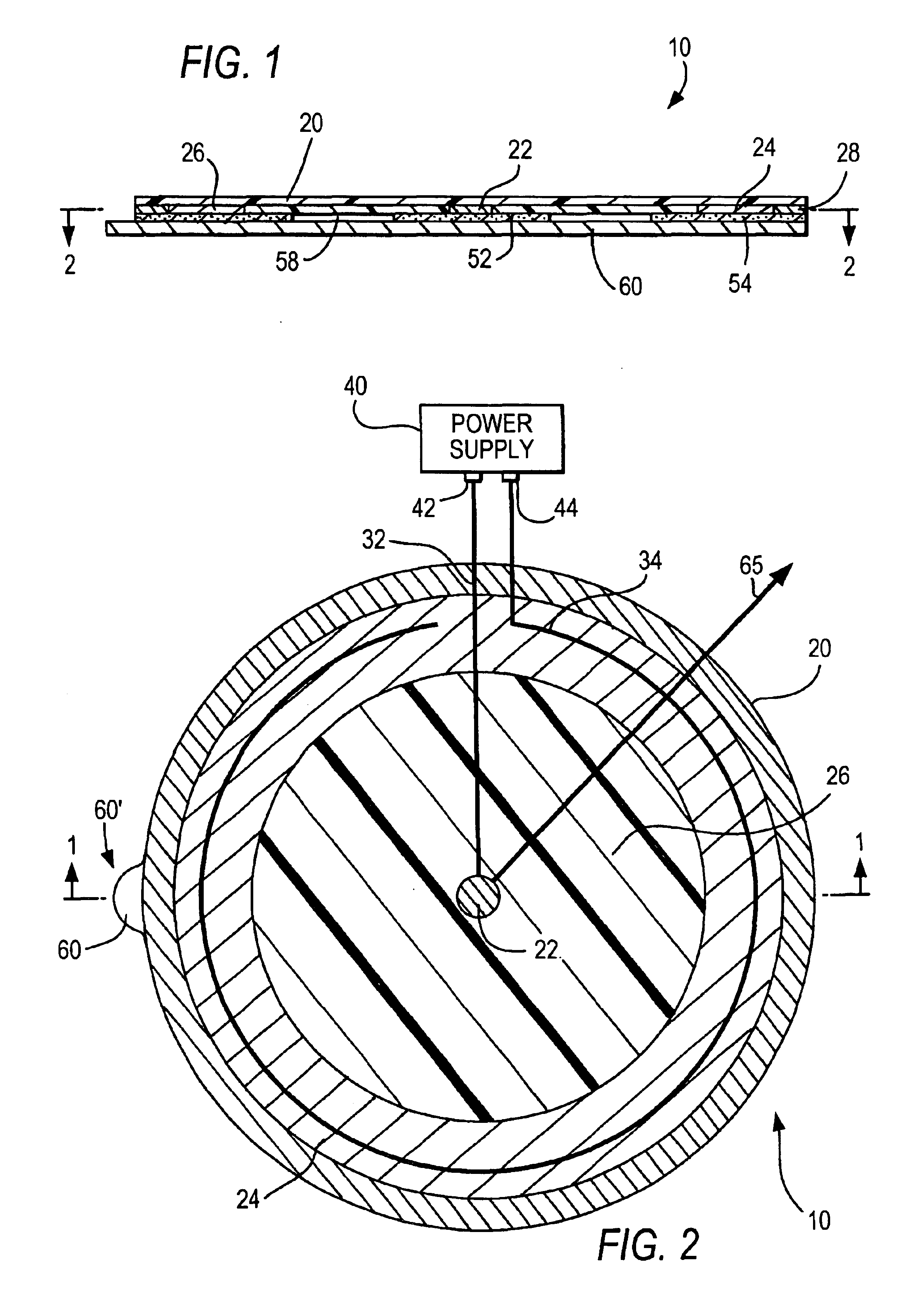Apparatus and methods for facilitating wound healing
- Summary
- Abstract
- Description
- Claims
- Application Information
AI Technical Summary
Benefits of technology
Problems solved by technology
Method used
Image
Examples
Embodiment Construction
[0030]FIG. 1 is a cross-sectional view of electrode system 10. The view in FIG. 1 is taken along the line 1—1 of FIG. 2. FIG. 2 shows a simplified cross-sectional view of electrode system 10 taken alone the line 2—2 of FIG. 1. As illustrated in FIG. 1, electrode system 10 includes top overlay layer 20 to which electrodes 22 and 24, electrically insulative element 26, and end material 28 are attached. Electrode 22 is located towards the center of top overlay layer 20. Electrically insulative element 26 surrounds electrode 22 and electrode 24 surrounds electrically insulative element 26. Attached to the other side of electrodes 22 and 24, electrically insulative element 26, and end material 28 are adhesive layers 52 and 54. As illustrated in FIG. 2, electrically conductive lead 32 connects electrode 22 to terminal 42 of power supply 40 and electrically conductive lead 34 connects electrode 24 to terminal 44 of the power supply 40.
[0031]Top overlay layer 20 may serve several different ...
PUM
 Login to View More
Login to View More Abstract
Description
Claims
Application Information
 Login to View More
Login to View More - R&D
- Intellectual Property
- Life Sciences
- Materials
- Tech Scout
- Unparalleled Data Quality
- Higher Quality Content
- 60% Fewer Hallucinations
Browse by: Latest US Patents, China's latest patents, Technical Efficacy Thesaurus, Application Domain, Technology Topic, Popular Technical Reports.
© 2025 PatSnap. All rights reserved.Legal|Privacy policy|Modern Slavery Act Transparency Statement|Sitemap|About US| Contact US: help@patsnap.com



